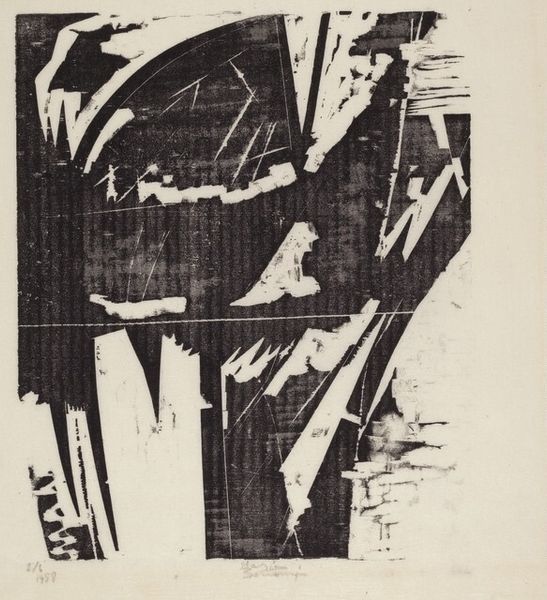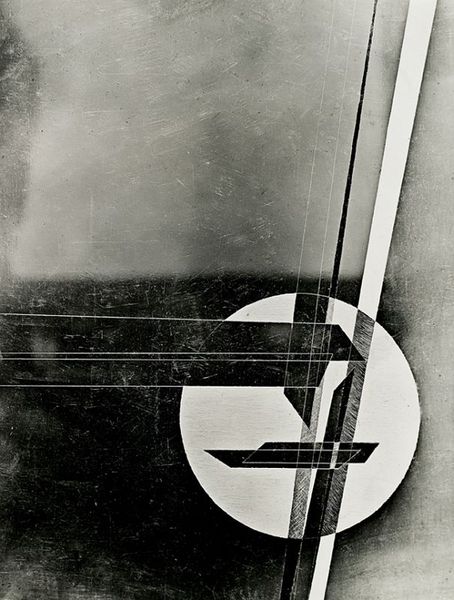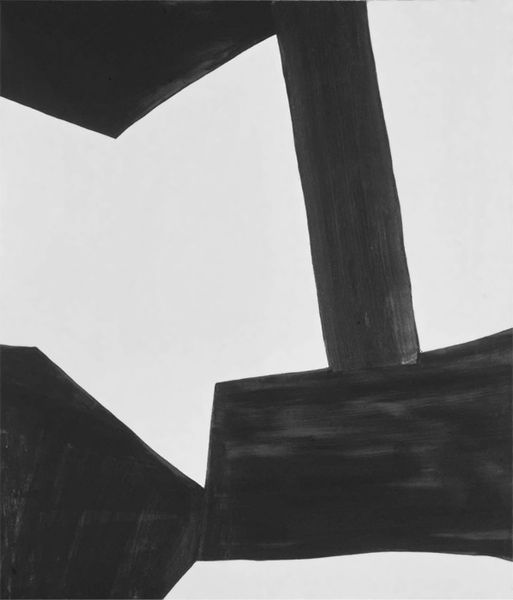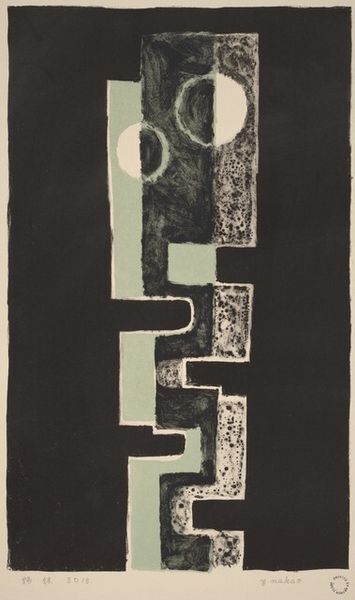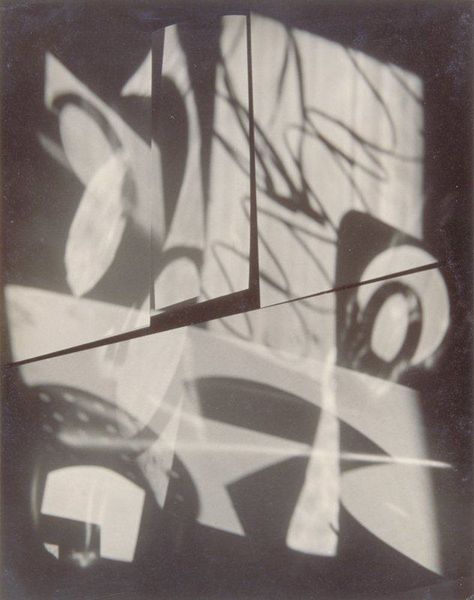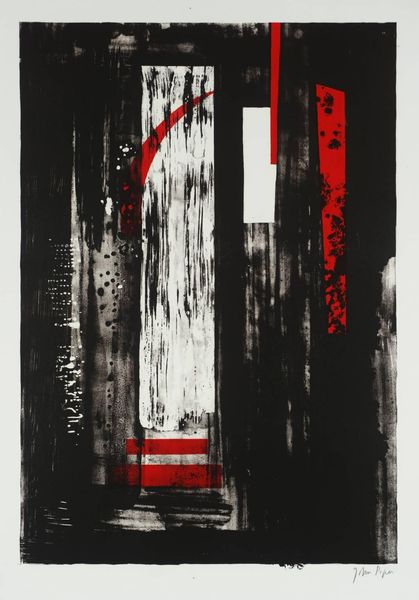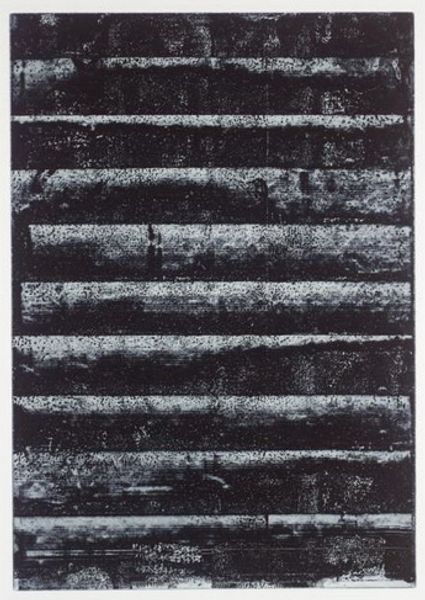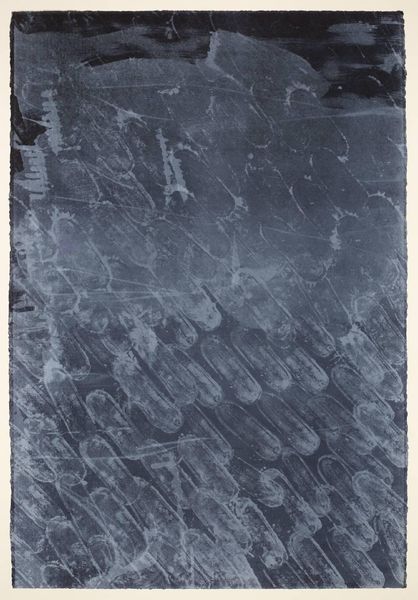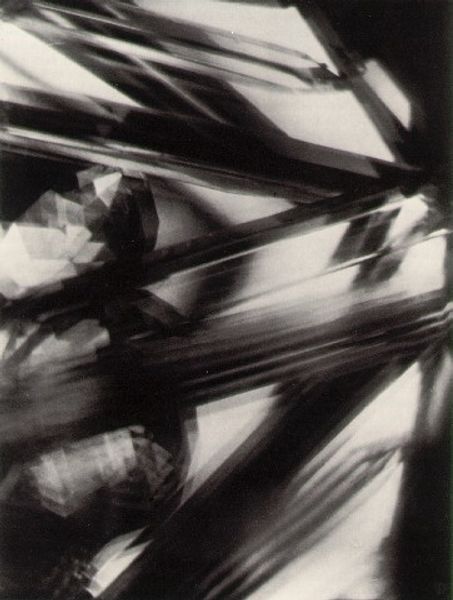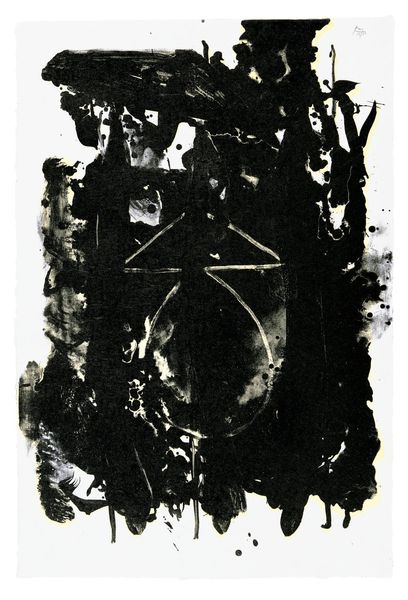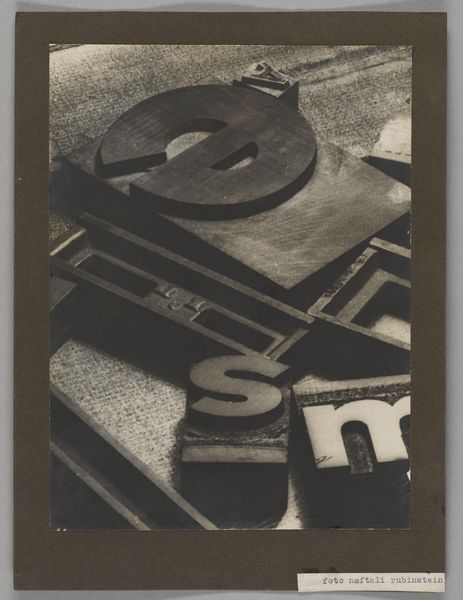
photography, gelatin-silver-print
#
abstract-expressionism
#
form
#
photography
#
geometric-abstraction
#
gelatin-silver-print
#
abstraction
#
line
Dimensions: image: 49.3 × 38.6 cm (19 7/16 × 15 3/16 in.) sheet: 50.8 × 40.5 cm (20 × 15 15/16 in.)
Copyright: National Gallery of Art: CC0 1.0
Curator: Let’s consider Aaron Siskind's “Chicago 10” from 1965, a gelatin silver print. At first glance, it reads as a stark study in contrasts. What are your initial thoughts? Editor: Well, there’s a palpable tension. The stark black and white emphasizes the fragmented geometric forms. The rough texture makes me think of urban decay, but there is still a formal organization about it. Curator: Siskind, often associated with Abstract Expressionism, uses photography not to document but to abstract, isolating forms to reveal their essence. Semiotically, we might read these forms—the circles, rectangles—as signifiers divorced from any clear referent. Editor: I agree that the power here stems from its ambiguity. But how does its historical setting of mid-1960s Chicago impact how we understand the image? It feels somehow connected to the urban renewal projects happening at that time; there's a deconstruction at play. Curator: Absolutely, one can draw inferences to urban environments, yet its abstraction makes specific social narratives harder to pin down. Notice the surface quality though: the granular texture, the nuanced tones of grey… Siskind’s process is about emphasizing the materiality of the photograph itself. Editor: True, however, consider Siskind's work within the broader context of social documentary photography. He seems to intentionally pull away from that tradition. Does his departure signal a commentary on its limitations? I'm curious how his earlier documentary work might play against these abstractions. Curator: That’s an interesting avenue to consider. He certainly evolved in style, didn’t he? These forms almost exist as pure visual phenomenon, asking us to engage with composition and light and shadow, independently from external references. Editor: Perhaps, and his move toward pure form is also an acknowledgement of how the built environment transforms. Its textures are laid bare through time, neglect, or even deliberate reconstruction. Curator: Seeing it this way adds another dimension. Form and its cultural associations— a powerful tension. Editor: Indeed. I find it interesting to consider the evolving role of abstract photography. Thank you for this detailed analysis.
Comments
No comments
Be the first to comment and join the conversation on the ultimate creative platform.
